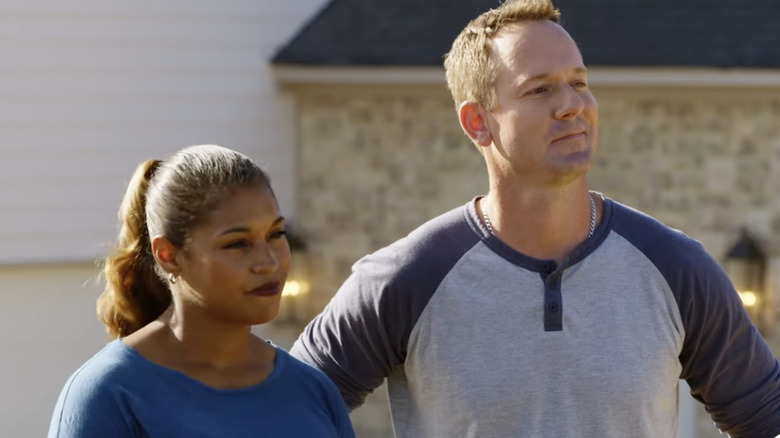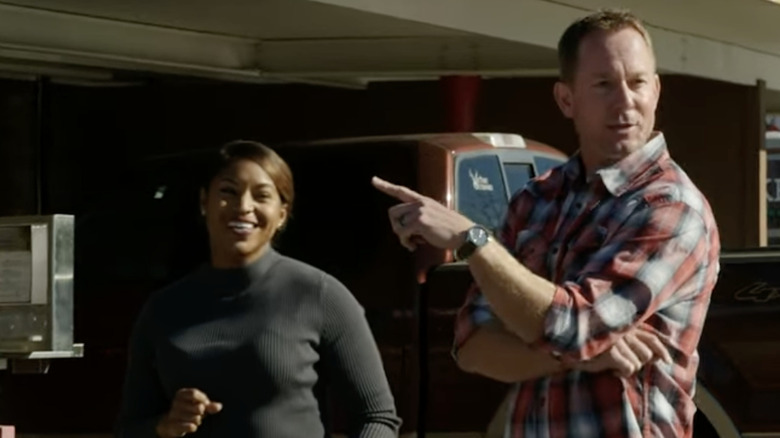HGTV's 100 Day Dream Home Is Actually A Furnishing Nightmare
Any fan of HGTV understands that the network is all about transformation. Take one relatable family, add one house sorely in need of a makeover, combine with renovation experts and presto! In an hour (or less), viewers will see a dream home appear where once stood an ugly duckling house. For the uninitiated, "100 Day Dream Home" subverts this beloved HGTV recipe. The show's hosts, Brian and Mika Kleinschmidt, face the challenge of building an entirely new house in the Tampa, Florida area in just 100 days, as explained on the HGTV website.
Most custom-built houses require six to eight months, minimum, to be completed. So a 100-day challenge is tough to accomplish in so many ways — not least of which is furnishing the finished product. Yet this difficulty factor may be the reason why last season garnered more than 18.1 million viewers (as reported by HGTV's parent company, Warner Brothers), all eager to see whether the Kleinschmidt's will meet the challenge in little more than three months.
Skeptics may doubt the show's 100-day promise, given that each house ranges in size from 2,500 to 4,500 square feet and sells for a price tag of $300,000 or more, according to Tampa Bay Times. While there's some TV magic involved, Mika Kleinschmidt, realtor and designer, and Brian Kleinschmidt, developer, simply know their trades well.
Tricks of the trade
To construct a new house in such a short span, the show does not include every aspect of the build in the timeline. "We start the 100-day clock once we break ground. Nobody wants to watch the permitting process on television," Brian Kleinschmidt explained to House Digest. He also brings in his own private inspectors and works on each project with a seasoned construction crew — all of which helps speed the process. "The biggest thing is all the sub[contractor]s work on the same page, and electricians don't mind being in the same house as plumbers and HVAC guys," he said. Since each subcontractor usually insists on working alone in a house, this is a significant way the timeline gets shortened.
Still, there's a much more important reason the Kleinschmidts are able to beat the clock. Mika Kleinschmidt finalizes all the design choices with each family in just two weeks, and then, once the carpenters frame the house, the family is not allowed back on the property until the building is done. "That's really what slows the process down," Brian told Tampa Bay Times. "The homeowner comes in every two days and says change this and change that."
Finishing touches
So the house is nearly complete: walls are painted, the wiring is done, the plumbing works, the gas fireplace is lit. What about the sofas and pillows and beds and chairs? Betsy Ayala, HGTV's senior vice president of production and development, does not hesitate to burst a lot of bubbles and reveal an untold truth about 100 Day Dream Home on the HGTV website. She explains that nearly all of the interiors seen on TV are staged.
Not unlike a Broadway show, a just-for-appearances reality is created by HGTV hosts for the big reveal. But all the beautiful decor disappears when the camera crew departs. That said, if the homeowners happen to fall in love with the staging furniture, they are given an opportunity to purchase individual pieces, she noted.
Most fans of the network understand that all of the homeowners appearing on HGTV pay for the construction that is done on their houses. Yet, Ayala did reveal one possible benefit to answering an HGTV casting call. On occasion, the network will pony up additional cash to help expedite a project.


